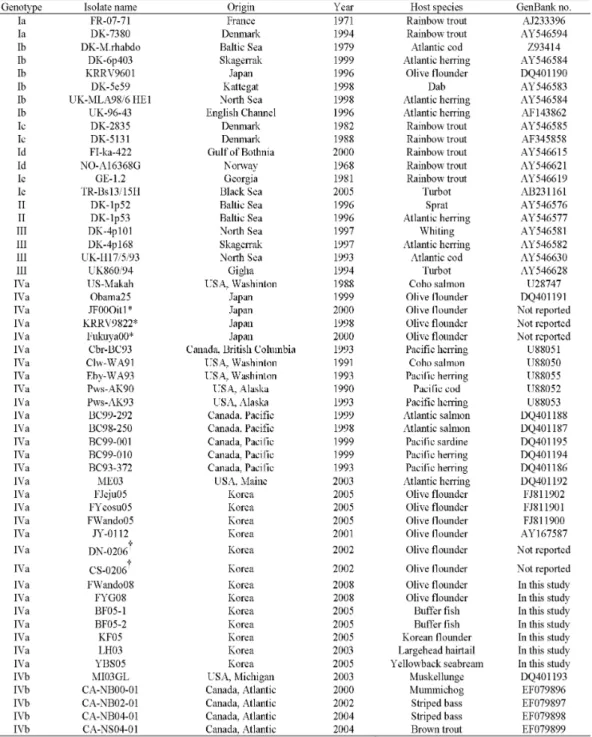Genetic positioning of Korean viral hemorrhagic septicemia virus (VHSV) from cultured and wild marine fishes
Wi Sik Kim, Sung Ju Jung * , Jong Oh Kim * , Du Woon Kim ** , Jeong Ho Kim *** and Myung Joo Oh *†
The Fisheries Science Institute, Chonnam National University, Yeosu 556-901, Korea
* Department of Aqualife Medicine, College of Fisheries and Ocean Science, Chonnam National University, Yeosu 550-749, Korea
** Department of Food Science and Technology, and Functional Food Research Center,Chonnam National University, Gwangju 500-757, Korea
*** Faculty of Marine Bioscience and Technology, Gangneung-Wonju National University, Gangneung 210-702, Korea
Viral haemorrhagic septicaemia virus (VHSV) is an epidemic virus in olive flounder Paralichthys olivaceus farms in Korea, since the virus have first isolated in 2001. In the present study, partial glycoprotein (G) gene nucleotide sequences of seven Korean VHSV from cultured olive flounder and wild marine fishes in coastal areas of Korea were analyzed to evaluate their genetic relatedness to worldwide isolates. Phylogenetically, all Korean VHSV formed only one minor cluster including Japanese isolates, in genotype IVa, while the North America isolates formed a different minor cluster in genotype IVa. These results suggest that Korean VHSV could be an indigenous virus in Korean and Japanese coastal areas, but have not been introduced from North America.
1)
Key words :

